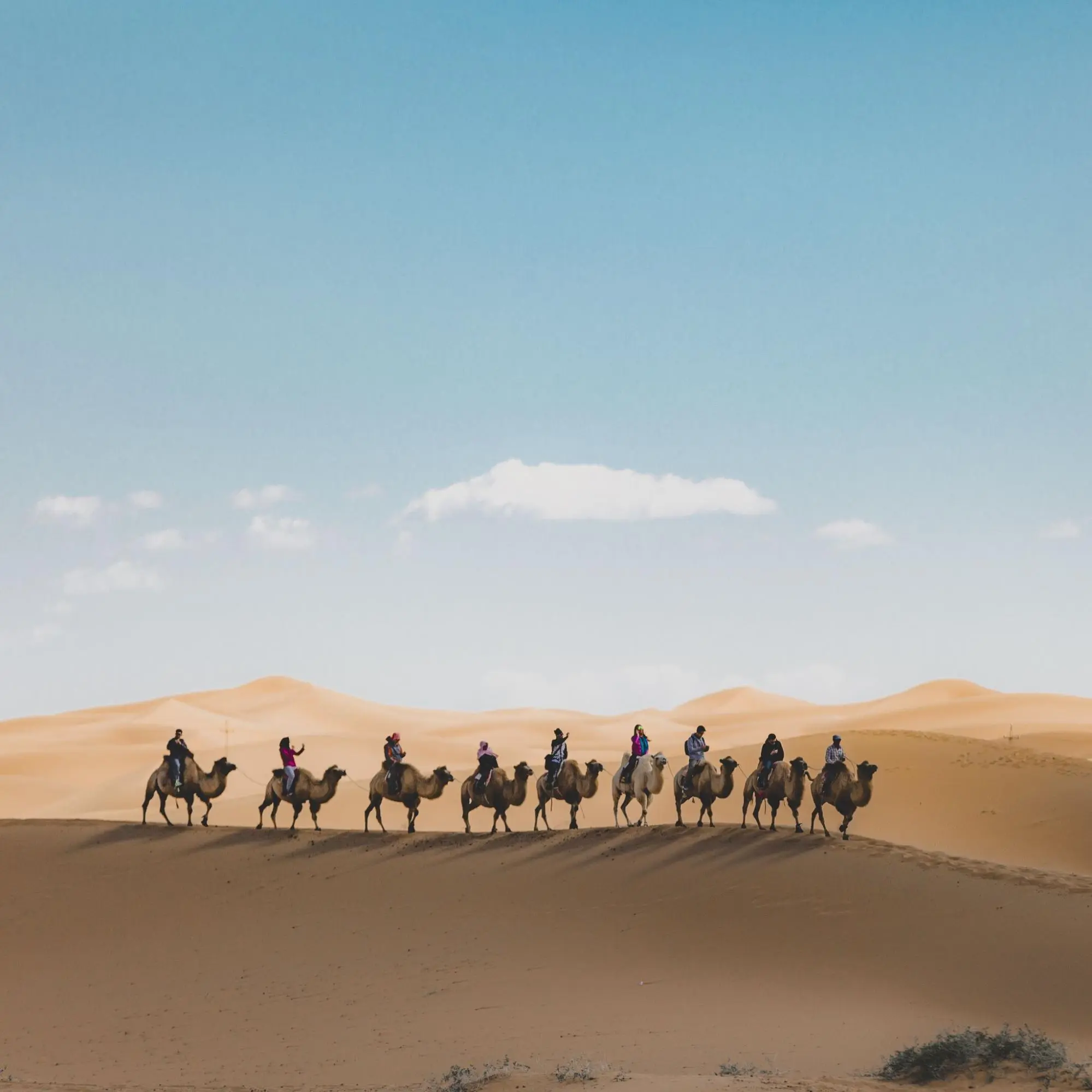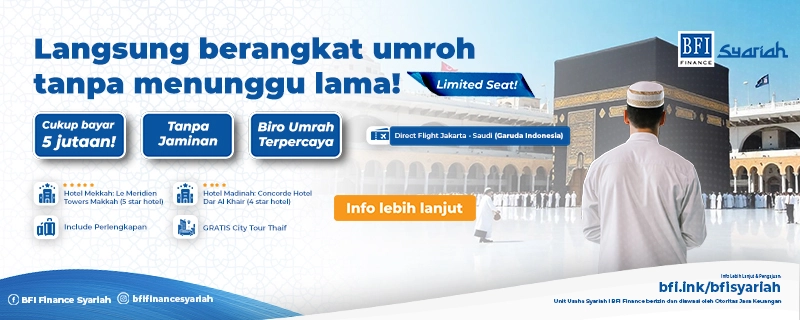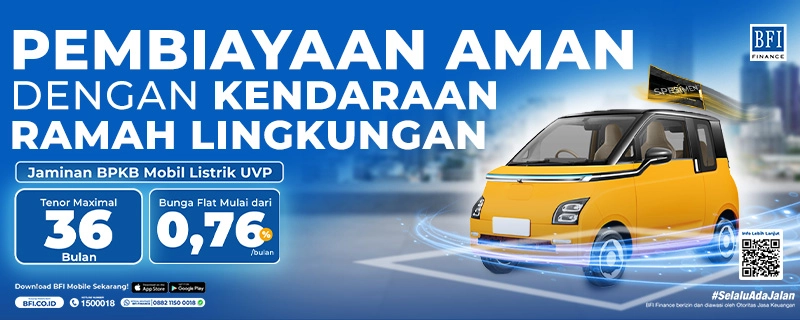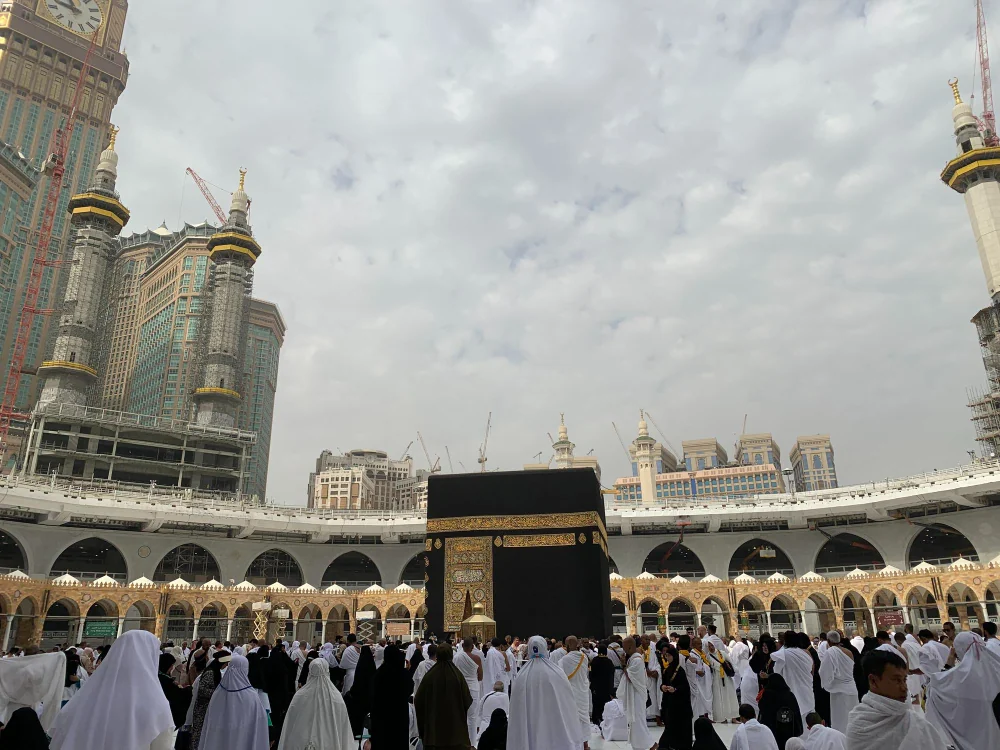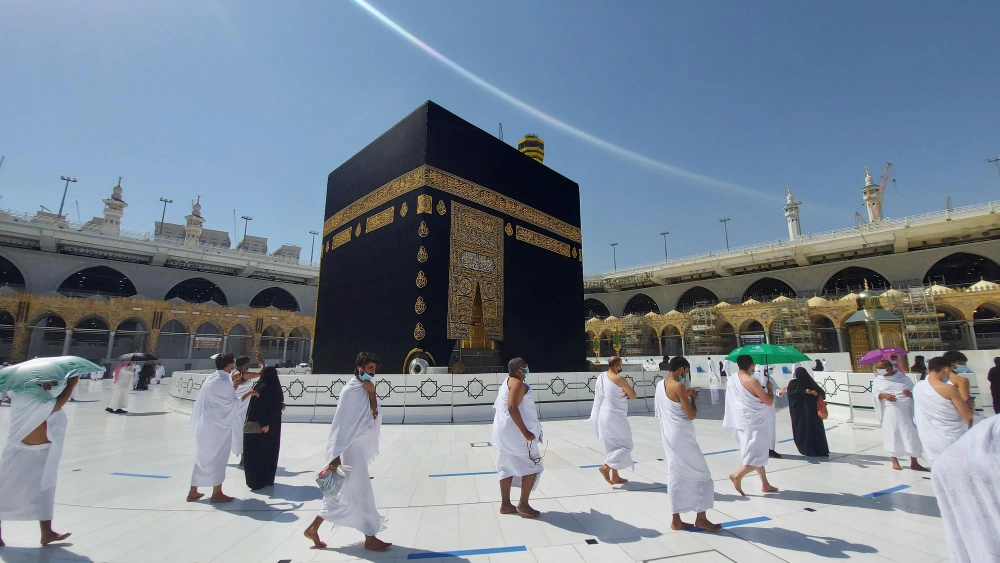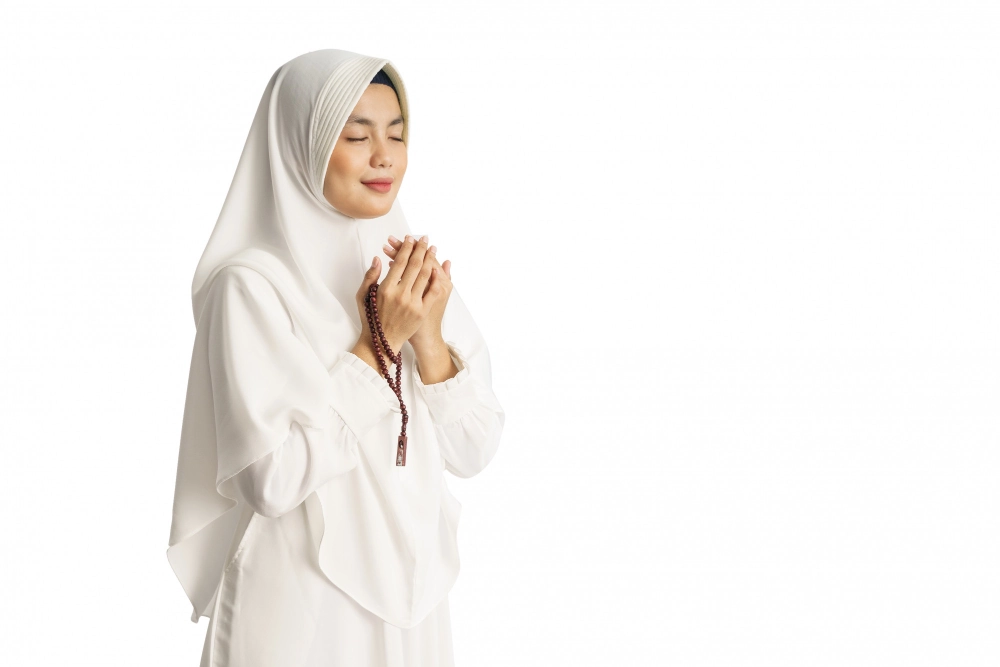Eid al-Adha, also known as the Festival of Sacrifice, is one of the major Islamic holidays celebrated on the 10th day of Dhu al-Hijjah in the Islamic calendar. Eid al-Adha marks the pinnacle of the Hajj pilgrimage, where millions of Muslims worldwide gather in Mecca to perform the rituals of Hajj. Eid al-Adha is also synonymous with the act of animal sacrifice.
So, what is the history of Eid al-Adha? Why is this holiday associated with animal sacrifice? Read on for a detailed explanation in the following article.
1. The History of Eid al-Adha
1.1 Prophet Ibrahim 'Alaihissalam Blessed with a Son
The history of Eid al-Adha begins with the story of Prophet Ibrahim 'Alaihissalam, a prophet deeply devoted to Allah Subhanahu wa ta'ala. It is said that Prophet Ibrahim 'Alaihissalam, at the age of 85, had not yet been blessed with a child and fervently desired a son to carry on his mission of spreading Allah's teachings. He prayed daily, and his prayer is immortalized in a verse from the Quran which means:
"My Lord, grant me [a child] from among the righteous." (As-Saffat [37]: 100)
After years of praying and hoping, Prophet Ibrahim 'Alaihissalam and his second wife, Hajar, were finally blessed with a son named Ismail. Ismail's arrival was greatly anticipated and considered a significant blessing for them.
1.2 Hajar's Struggle Between Safa and Marwah
When Ismail was still an infant, Allah Subhanahu wa ta'ala commanded Prophet Ibrahim 'Alaihissalam to take Hajar and Ismail to a barren valley, later known as Mecca. He was also instructed to return to his first wife, Sarah, in Jerusalem. Despite the challenging nature of this command, Prophet Ibrahim 'Alaihissalam and Hajar remained steadfast and trusting in Allah's decree, as recorded in the Quran:
"Our Lord, I have settled some of my descendants in an uncultivated valley near Your sacred House, our Lord, that they may establish prayer. So make hearts among the people incline toward them and provide for them from the fruits that they might be grateful." (Ibrahim [14]: 37)
Prophet Ibrahim 'Alaihissalam left Ismail and Hajar there with limited provisions. When their water supply ran out, Hajar, in her desperation, ran back and forth seven times between the hills of Safa and Marwah in search of water for her son. Allah Subhanahu wa ta'ala answered her prayer by producing a spring of water, known as Zamzam, from beneath Ismail's feet. This event is symbolic in the Hajj pilgrimage.
The event of Hajar running between the hills of Safa and Marwah is commemorated in the Hajj ritual called Sa’i. After performing Tawaf (circumambulating the Kaaba), pilgrims proceed to Safa and briskly walk to Marwah, repeating this journey seven times as Hajar did.
The Zamzam water, which gushed forth from the strike of Ismail's feet, became the primary drinking source for Hajj and Umrah pilgrims in Mecca. Zamzam water is renowned for its virtues and blessings bestowed by Allah Subhanahu wa ta'ala.
1.3 Prophet Ibrahim's 'Alaihissalam Dream to Sacrifice His Son
One of the most prominent stories in the history of Eid al-Adha is when Prophet Ibrahim 'Alaihissalam received a command from Allah Subhanahu wa ta'ala through a dream to sacrifice his son, Ismail. This command was undoubtedly perplexing for Prophet Ibrahim 'Alaihissalam. Despite his deep love for his son, it was a direct order from Allah Subhanahu wa ta'ala.
Eventually, Prophet Ibrahim 'Alaihissalam mustered the courage to discuss the command with Ismail, who willingly agreed to be sacrificed as per Allah's decree.
1.4 Allah Subhanahu wa ta'ala Replaces Ismail with a Ram
Despite the immense difficulty, both Prophet Ibrahim 'Alaihissalam and Ismail demonstrated remarkable obedience. Prophet Ibrahim 'Alaihissalam prepared to carry out the command with complete sincerity. When the moment of sacrifice arrived, Ismail's hands and feet were bound, and Prophet Ibrahim 'Alaihissalam closed his eyes, holding the knife to Ismail's neck. However, by Allah's Subhanahu wa ta'ala command, Ismail was miraculously replaced with a ram. This is described in the Quran in Surah As-Saffat, verses 107-110:
"And We ransomed him with a great sacrifice," (As-Saffat [37]: 107)
"And We left for him [favorable mention] among later generations:" (As-Saffat [37]: 108)
"Peace upon Ibrahim." (As-Saffat [37]: 109)
"Indeed, We thus reward the doers of good." (As-Saffat [37]: 110)
In remembrance and honor of this event, Muslims worldwide perform the act of sacrifice each Eid al-Adha.
2. The Wisdom Behind the History of Eid al-Adha
2.1 The Command to Perform Hajj
One of the wisdoms derived from the history of Eid al-Adha is the command to perform the Hajj pilgrimage for those who are able. The annual pilgrimage in Mecca reminds Muslims of the exemplary conduct of Prophet Ibrahim 'Alaihissalam and his family. The series of Hajj rituals, including Sa’i between Safa and Marwah and the sacrifice of animals, are forms of respect and reflection on these historical events.
2.2 The Command to Sacrifice
Another lesson is the command to sacrifice. Through this act, Muslims are taught to share and care for others, particularly the needy and less fortunate. The sacrifice also teaches about sincerity in worship and the sacrifice of one's possessions.
2.3 Devotion in Following Allah's Subhanahu wa ta'ala Commands
The story of Prophet Ibrahim 'Alaihissalam and Ismail illustrates a high level of devotion in obeying Allah's Subhanahu wa ta'ala commands. Despite the gravity of the command, they executed it with complete sincerity and submission. This serves as an example for Muslims to always obey and submit to Allah's Subhanahu wa ta'ala commands, even when they are challenging.
2.4 Social Solidarity
The distribution of sacrificial meat to the poor and neighbors is a significant moment during Eid al-Adha. This teaches the importance of community and social solidarity. During Eid al-Adha, Muslims are encouraged to be more aware of their surroundings and share joy with the less fortunate.
2.5 Personal Growth

The act of sacrifice also contains the wisdom of personal growth. Through sacrificing, Muslims are reminded to cleanse themselves of greed and selfishness. Additionally, sacrifice teaches the importance of giving up for the greater good and strengthens solidarity and brotherhood among humans.
3. How to Perform the Sacrifice?
3.1 Performed Right After Eid Prayer
The sacrifice is performed immediately after the Eid al-Adha prayer. This follows the Sunnah of the Prophet Muhammad Shallallahu ‘alaihi wa Sallam, who recommended sacrificing animals after the completion of the Eid prayer, as mentioned in the Hadith:
"Whoever sacrifices before the Eid prayer, it is for himself. And whoever sacrifices after the Eid prayer and two sermons, he has completed his worship and followed the way of the Muslims." (HR. Bukhari)
3.2 The Person Sacrificing Can Only Take ⅓ of the Meat
According to Islamic teachings, the person sacrificing the animal can only take one-third of the meat for themselves and their family. The remainder must be distributed to the poor and neighbors. This teaches justice and social care. This rule aligns with the Hadith of the Prophet Muhammad Shallallahu ‘alaihi wa Sallam as narrated by Imam Bukhari and Imam Muslim:
"Whoever sacrifices an animal should not eat all the meat themselves, but should give one-third to the poor, one-third to neighbors, and keep one-third for themselves." (HR. Bukhari no. 5537 and HR. Muslim no. 1951)
The distribution of sacrificial meat teaches justice and social care. It reminds us not only to think of ourselves but also to share with those in need. This makes the sacrifice more meaningful and beneficial to humanity.
3.3 The Animal Should Be the Fattest
It is Sunnah to choose the fattest and healthiest animal for the sacrifice. This is a form of respect for Allah's Subhanahu wa ta'ala command and an effort to offer the best in worship. This is based on the behavior of the Prophet Muhammad Shallallahu ‘alaihi wa Sallam as mentioned in the Hadith:
"From ‘Aishah and Abu Hurairah (RA), that once the Prophet Shallallahu ‘alaihi wa Sallam wanted to sacrifice, he bought two big, fat, horned, white-and-black rams, and castrated. He then slaughtered them..." (HR. Ibnu Majah and authenticated by Al-Albani).
4. Types of Sacrificial Animals
In the act of Qurban, there are specific guidelines regarding the types of animals that can be sacrificed. The selection of sacrificial animals is based not only on their type but also on their physical condition and health. Here is an explanation of the types of animals that are permissible for Qurban according to Islamic law.
4.1 Livestock Animals
Livestock animals that can be sacrificed include camels, cows, goats, and sheep. Camels and cows are typically chosen for group sacrifices, while goats and sheep are usually chosen for individual sacrifices. These animals are selected because of their high economic value and the wide utility of their meat for the community.
4.2 Preferred Males
The sacrificial animals that are Sunnah to be slaughtered are male animals. However, there is no prohibition against sacrificing female animals. The preference for male animals is because, in terms of health, they are often in better condition and have greater economic value. In addition, male animals are usually free from the burden of giving birth and nursing, making them a better choice for sacrifice.
4.3 Minimum Age Requirement
There are age criteria that must be met for the sacrificial animals. Goats and sheep must be at least one year old, cows must be at least two years old, and camels must be at least five years old. This age requirement ensures that the animals have reached a mature and healthy state.
4.4 Free from Defects
Sacrificial animals must be free from defects. Animals with broken horns, missing teeth, or other disabilities are not permissible for sacrifice. This is because the sacrificial act is intended to be a form of respect and honor to Allah Subhanahu wa ta'ala, and using defective animals would diminish the value of the sacrifice. The Prophet Muhammad Shallallahu ‘alaihi wa Sallam said:
"There are four kinds of animals which will not do for sacrifice: One-eyed, lame, sick, and emaciated animals.” (HR. At-Tirmidhi)
4.5 Not in Heat or Nursing
Animals that are to be sacrificed must not be in heat or nursing. Animals in heat can display unstable behavior, while nursing animals need a lot of energy for their offspring. Sacrificing animals in these conditions is considered unethical as it can disrupt the well-being of the animals and their young who still need milk. Besides being in heat and nursing, animals should also not be pregnant.
The history of Eid al-Adha holds many valuable lessons and meanings for Muslims. From the exemplary story of Prophet Ibrahim 'Alaihissalam and his family, we can learn about obedience, sincerity, and sacrifice in carrying out the commands of Allah Subhanahu wa ta'ala.
Through sacrifice, we are taught to share with others, especially those in need, and to strengthen the bonds of brotherhood among humans. May we all be able to draw wisdom from the history and practice of Eid al-Adha and always strive to be more obedient servants and caring towards others.
–
Dear BFI friends, here is what you need to know about the history of Eid al-Adha. If you need additional funds for your needs, you can apply for a loan at the Sharia Business Unit of BFI Finance. This financing can be used for multipurpose needs with car BPKB collateral, such as home renovations, purchasing capital goods, and other needs for your family. Let's apply for your Sharia financing now!
